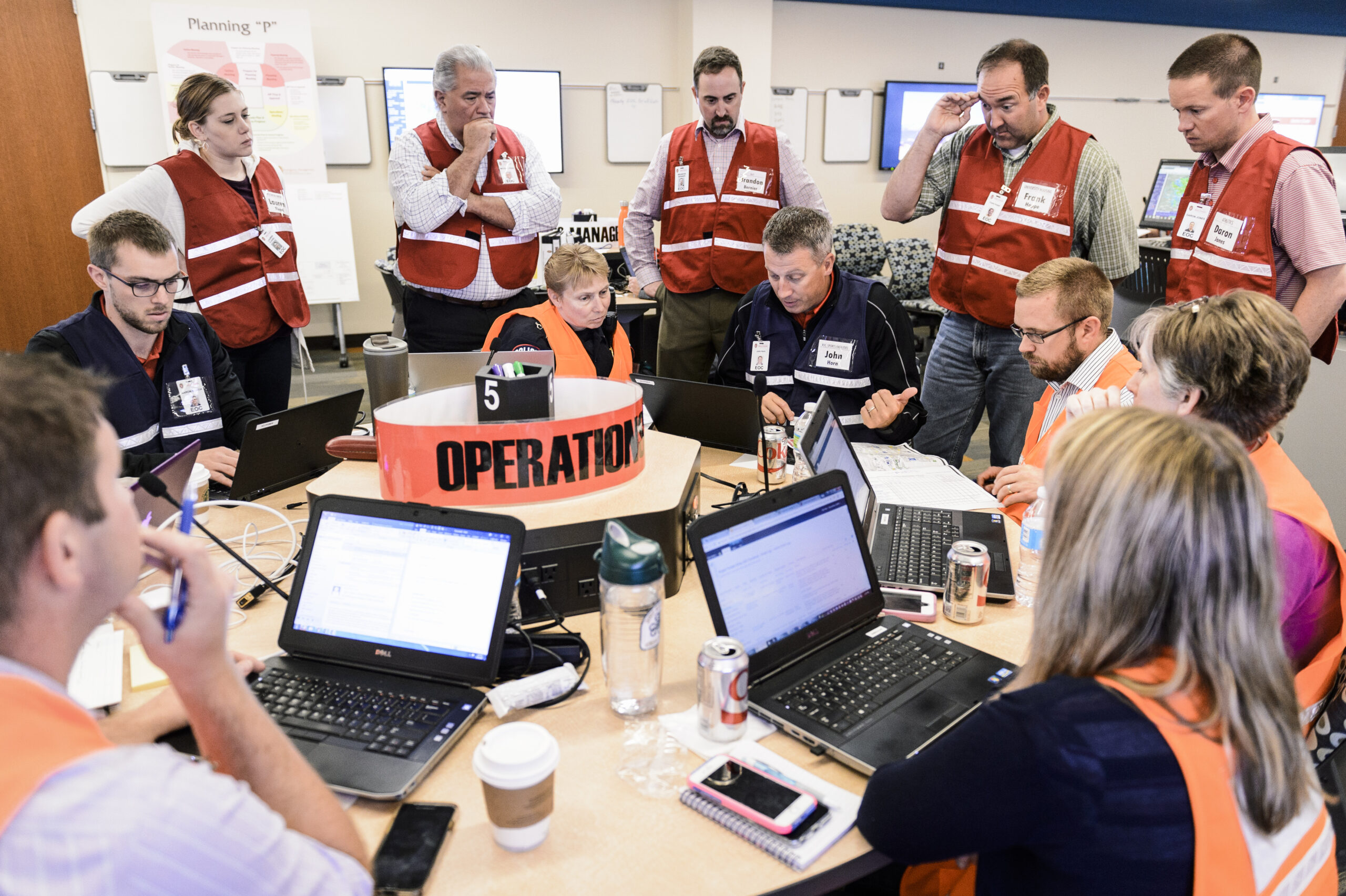
The UWPD Emergency Management Unit’s commitment is to safeguard UW-Madison and the campuses of the Universities of Wisconsin against both natural and human-induced disasters. We proactively mitigate and prepare for potential hazards and emergencies by maintaining the UW-Madison Emergency Operations Plan (EOP). In close collaboration with campus departments, we ensure the seamless continuity of operations by developing their Continuity of Operations Plans (COOPs). Additionally, we work closely with facility managers to develop comprehensive Occupant Emergency Plans (OEPs) tailored to individual buildings.
We test these plans using a range of exercises, including workshops, tabletop exercises, functional exercises, and full-scale exercises.
For additional campus safety, the EM unit also offers CPR/AED training and Active Threat Response Training to students, staff, and faculty.
Emergency Procedures Guide
Being prepared is one of the best ways to stay safe on campus. Our Emergency Procedures Guide brings together everything you need to know — from how to receive emergency alerts to what to do in the event of a fire, severe weather, or other critical incident. Please take a few minutes to review it now so you’re ready for whatever comes your way.
Frequently Asked Questions
This is an accordion element with a series of buttons that open and close related content panels.
If I am an EOC Member, what do I need to bring to the EOC when it is activated?
Our guideline is that your initial response to an EOC activation may include a 12-hour shift. With this, please bring items that you will need or want during that time. Our recommended items are below:
- WisCard (or other official photo ID)
- Work laptop and charger
- Cell phone and charger
- Snacks and drinks (actual meals are provided)
- Medications
- Notebook and pen
- Any other personal care items
Who do I contact for assistance with updating my COOP?
If you need assistance with your Continuity of Operations Plan or have questions about a COOP Tabletop Exercise, please contact our Emergency Management Unit at em@uwpd.wisc.edu.
What is the difference between a Lockdown and Shelter-In-Place?
A “Lockdown” is an emergency situation in which people are not allowed to freely enter, leave, or move around in a building or space because of a danger (typically when the danger is outside).
A “Shelter-In-Place” is an emergency situation in which you are advised to find a safe location indoors and stay there until you are given the “all clear” or directed to evacuate. This is what UW-Madison has the technology and ability to do if an incident necessitates it.
What types of natural disasters may occur in the Dane County, WI area?
Per Dane County Emergency Management’s Natural Hazard Mitigation Plan some of the disasters that can occur in Dane County include dam failures, drought, extreme cold/heat, flooding, fog, hail, landslide/erosion/sinkholes, lightning, tornadoes, wildfire, winter storms, and others.
How does the university prepare for disasters?
Our Emergency Management Unit collaborates with local, municipal, county, state, and federal agencies to effectively manage disasters using FEMA’s five recommended phases: Prevention, Mitigation, Preparedness, Response, and Recovery. Comprised of specialists dedicated to planning, implementing mitigation strategies, and conducting emergency training, our unit partners with campus stakeholders to host workshops and exercises—ranging from functional and tabletop to full-scale simulations—on a regular basis. Additionally, we maintain partnerships with external stakeholders to ensure comprehensive disaster preparedness across all phases.
What are the training topics covered by the Emergency Management Unit?
Our Emergency Management Unit provides trainings such as Active Threat Response Training, CPR and AED Training, Occupant Emergency Plan and Continuity of Operations Plan Workshops and Exercises, and more. Email our Emergency Management Unit if you’re interested in learning more.
How will I be advised of an emergency affecting the campus?
Please see our WiscAlerts information page.




